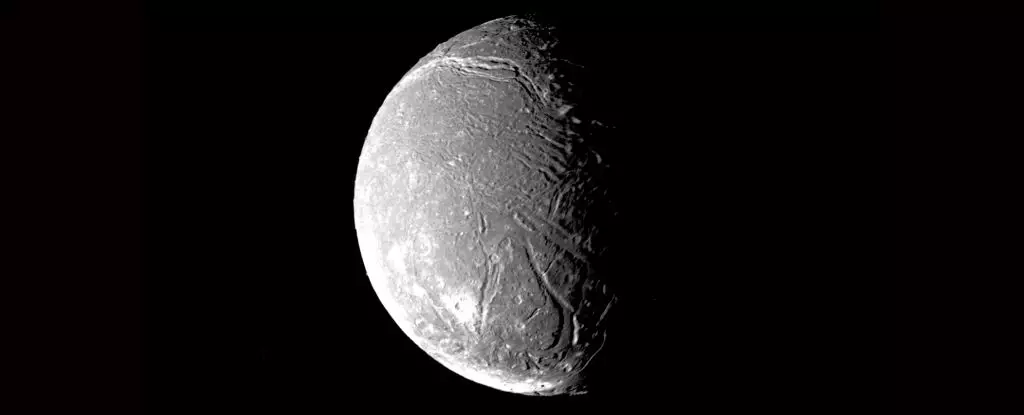The vastness of our Solar System is teeming with wonders, including the moons of the gas giants like Uranus. Among these celestial bodies, Ariel stands out as a moon with intriguing geological features that hint at the possibility of hidden oceans beneath its icy crust. Understanding Ariel is not just about appreciating its beauty; it’s about unlocking secrets that could revolutionize our understanding of astrobiology and planetary geology.
Recognized for its rugged, chasm-riddled terrain, Ariel hosts some of the most youthful geological features observed in the moons of Uranus. The deep channels that mar its surface could be indicative of an active geological history. Recent studies led by researchers like Chloe Beddingfield suggest that these chasms may offer a glimpse into Ariel’s interior, unveiling a majestic oceanic layer hidden beneath thick ice.
The primary focus of research surrounding Ariel involves understanding the origins of these chasms. Scientific inquiry has speculated that they may be the result of tectonic and volcanic activity, yet pinpointing the precise mechanisms has remained elusive. One groundbreaking theory posits that a process similar to seafloor spreading on Earth could be responsible for the features observed. If warmer materials surge towards the surface, they could create fissures that allow for the deposition of materials, thus letting researchers study the moon’s interior indirectly.
The relationship between the moons of Uranus is another area of fascination. Historically, these moons have entered into orbital resonance, which is a gravitational dance where their orbital periods form precise ratios. This phenomenon generates internal heat due to gravitational interactions, potentially leading to the melting of ices and the formation of liquid water beneath the surface. The concept of resonance is crucial; it could explain shifts in Ariel’s geology and help scientists make educated guesses about the possible existence of a subsurface ocean.
Recent observations, especially from powerful instruments like the James Webb Space Telescope (JWST), have suggested that Ariel may host an ocean beneath its icy exterior. This revelation adds another layer of complexity, as the ocean’s interaction with the surface might be pivotal in understanding the distribution of carbon dioxide ices seen in the chasms.
While the theories abound, one hurdle remains: how do scientists gather more concrete evidence about Ariel’s geological structure and its possible hidden ocean? Current data is insufficient, primarily due to limitations in past missions, such as Voyager 2, which lacked the tools necessary for detailed mapping of ice distributions on Ariel’s surface. Thus, there lies a critical gap in our understanding.
Acknowledging this obstacle presents an urgent call to action for space agencies around the globe. Plans for an exploration mission to Uranus and its moons, including Ariel, are long overdue. Such a mission could provide the necessary equipment to conduct more sophisticated analyses and mapping exercises, ultimately shedding light on the enigma of Ariel’s chasms and their relationship to the potential ocean beneath the surface.
The implications of discovering a subsurface ocean on Ariel extend beyond mere curiosity. An environment that sustains liquid water could reveal conditions favorable for life, leading to questions about extraterrestrial biology and the solar system’s complexity. Understanding the chemical processes taking place on Ariel could provide insights into planetary formation and evolution, contributing to our broader comprehension of celestial phenomena.
Not only does Ariel represent a tantalizing research target, but it also serves as a reminder of the mysteries yet to be unveiled in our own cosmic backyard. The search for its hidden ocean, the origins of its geological features, and the potential for life beyond Earth encapsulate the very essence of planetary exploration.
Ariel stands as a captivating bead in the necklace of our Solar System. Each deep chasm and icy trail tells a story of geological tumult and potential. As we push forward into the future of space exploration, Ariel should be prioritized. Understanding what lies beneath its icy facade could not only answer the pressing questions about planetary processes but also redefine what we understand about life in the universe. With the right missions, we may soon uncover the secrets this remarkable moon has hiding in its depths. The clock is ticking for space agencies to take action—Ariel awaits!


Leave a Reply